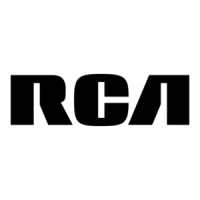INPUT/OUTPUT
OPERATION
INTRODUCTION
INPUT/OUTPUT
CHANNELS
Selector Channels
• The RCA Model 70/46 Processor can control a
variety
of
input/output
devices. All
the
input/output
devices function independently
of
normal
processor operation. This simultaneous operation is achieved by processor
input/output
channels
that
control
input/output
operations.
The
control
electronics
of
each
peripheral
device is connected
to
an
input/output
channel
via the
RCA
Standard
Interface. This
interface
permits
all
peripheral
equipment
(with
the
exception
of
remote communications
and
random
access devices) to be
attached
to
any
channel in
the
70/46
Processor.
Remote communication devices
must
be connected
to
the
multiplexor
channel. Random access devices
must
be connected to a selector channel.
After
an
input/output
operation is
initiated
by
the
program,
data
is
transferred,
byte-by-byte, between
the
processor
and
the
peripheral
device.
This
data
transfer
over
the
standard
interface
is controlled by
the
appli-
cable
input/output
channel,
freeing
the
processor to continue
the
program.
Each
of
the
channels on
the
70/46
Processor
can
interrupt
nonnal
process
or
operations.
• The
70/46
Processor
has
two types
of
input/output
channels, selector
channels
and
a multiplexor channel.
•
Up
to
four
selector channels (optional) can be
attached
to a
70/46
Processor;
each selector channel can
address
up
to
256
peripheral
devices.
Provision is
made
for
up to
four
high-speed selector channels,
as
options
on
the
70/46
Processor. The high-speed selector channels reduce
main
memory
interference
due to
input/output
data
transfers,
such
that
the
maximum
aggregate
system
interference
rate
is 1000KB
per
second;
however,
the
maximum
data
rate
on
anyone
selector channel is 465KB.
The
programming
characteristics
of
the
multiplexor
and
optional
selector channels
are
identical to
the
70/45.
On
the
70/46
Processor, each selector channel
has
two
standard
inter-
face
trunks;
each
standard
interface
trunk
can be connected to
the'control
electronics
of
an
input/output
device. A device control electronics controls
one device (Le.,
card
reader,
printer),
or
a
number
of
devices (i.e.,
tape
controller: up
to
16
tape
stations).
Only one device can
operate
on a selector channel
at
one time. How-
ever, all selector channels can
operate
simultaneously with,
and
independ-
ently of, normal processor operation.
The mUltiplexor channel operates simultaneously
with
selector chan-
nels
and
independently
of
normal processor operation.
Control
and
operation
of
each
input/output
device connected to
the
multiplexor channel is done
through
a
set
of
subchannel
registers
con-
tained
in non-addressable
main
memory.
36

